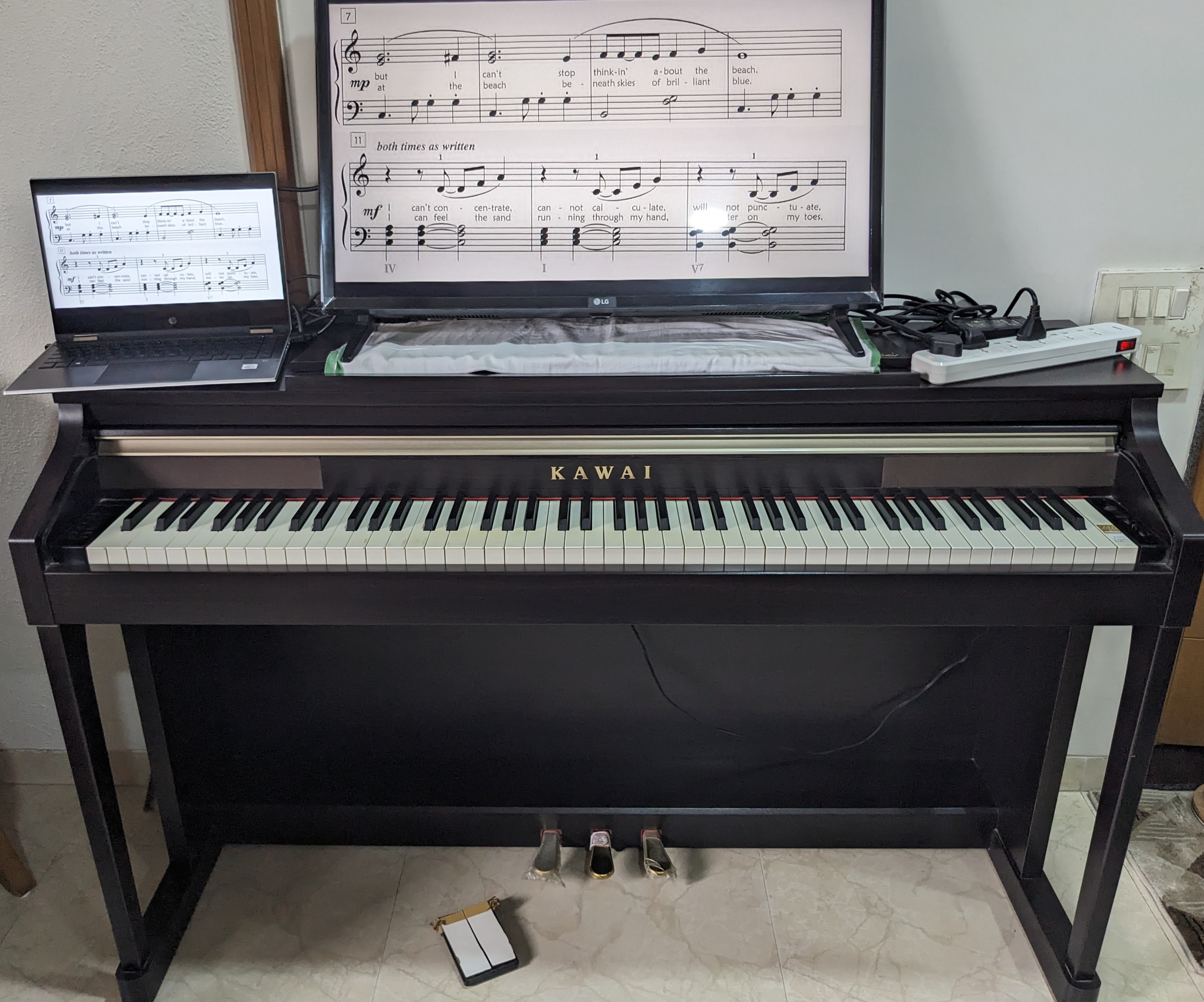Imagine this: You're sitting at your piano, ready to play your favorite piece, but the sheet music is just too small to read clearly. The notes blur together, and you find yourself squinting and struggling to follow along.
This is a reality for many musicians facing vision challenges. Music doesn't have to stop when vision changes. With the right tools and strategies, you can keep playing and enjoying music, even when vision becomes challenging.
Age-related macular degeneration (ARMD) and other vision conditions like diabetic retinopathy affect millions of people each year. These conditions can make everyday tasks challenging, including reading sheet music.
For musicians, the challenges are unique:
But here's the good news: these challenges can be overcome. The solutions we'll explore can help you continue making music and can be adapted for other activities too.
In the early stages, simply enlarging your sheet music using a copier can make a big difference. However, large paper copies can be difficult to handle and turn during performance.
Digitizing your music opens up many possibilities. Scan your sheet music and view it on a large TV monitor connected to your laptop. This gives you the flexibility to magnify digitally as needed.
As magnification increases, fitting entire pages on screen becomes challenging. This is where scrolling becomes essential, but it's not easy while playing an instrument.
The solution: Use a foot pedal to manage page scrolling seamlessly. This keeps your hands free for playing while giving you control over the music display.

You have several options for foot pedals:
To repurpose a numeric keypad as a foot pedal:
Scrolling isn't always precise, and you might need multiple taps to position music bars correctly. To solve this, consider breaking pages at set points (like every 2 bars) to ensure everything fits perfectly on one screen.
Tools to help:
Instead of mapping left/right click to the foot pedal, you can remap page up/down functions for smoother transitions between sections.
Watch this demonstration of the foot pedal setup in action:
Adapting to visual challenges doesn't mean letting go of your passions. With the right tools and strategies, music can remain accessible and enjoyable.
If you need further input on the setup, guidance on the tools, would like to brain-storm ideas around this, or need help with digitizing your music or creation of the wireless foot pedal, please reach out to contact.vitranova@gmail.com.